
Hooves pound the dirt, billowing dust to create a haze through which a crowd of hands clap and wave. The shutter clicks. A cowboy sits atop a light-colored horse, his right arm outstretched holding a rope. A captive audience’s mouths fall agape, enthralled at the spectacle. Weinberg first-year Josh Sukoff captured this moment in a black-and-white photograph at a Colorado rodeo.
A photographer’s work begins before they press the shutter button. To create the best shot, they first choose a lens, adjust the camera mode and select an optimal position for lighting and angles. The process also extends long after taking the photos, when the photographer sifts through hundreds, sometimes thousands, of their images to choose the top few. From setup to photo selection, Northwestern student photographers put a lot of thought into getting the right shot.
Josh Sukoff
When Sukoff debated which of his photos to bring as decorations for his college dorm room, the monochromatic image of the Colorado rodeo stood out. He wanted one that would hold his interest, calling the picture “timeless.”
Sukoff discovered visual media at sleepaway camp in 2014, where he says his disinterest in sports led him to shooting clips for a documentary with the camp’s media department. He says his passion for photography stemmed from this experience with videography.
“I enjoyed being behind the camera,” Sukoff says. “I enjoy being able to put different stories together with the same type of media.”
An avid skier, he began by photographing his home state of Colorado. Sukoff experimented with new techniques and uploaded his photos onto Unsplash, a royalty-free stock image website. He also began posting his photos on social media sites such as Instagram.

A cowboy at the Colorado rodeo. (Photo by Josh Sukoff)
Impressed by a photo he posted on Instagram, the Aspen Daily News messaged Sukoff about shooting the 2022 X Games, an annual extreme sports event.
“You’re surrounded with people who are so much more talented than you, but they’re so willing to share their tips and tricks,” Sukoff says. “I didn’t feel afraid to go up to the person who’s working for The Denver Post and ask him about something.”
One tip that a fellow reporter gave Sukoff was to avoid “guy in the sky” photos, in which an airborne biker is set against the sky as a background. Sukoff says that although these images are cool, the reporter explained that it’s more important to show the player’s position in relation to the ground.
Sukoff’s camera takes 20 photos per second. By holding the shutter at critical moments, he can capture images the human eye cannot.
“If I were to look at something, I’m not seeing it as a picture. I’m seeing it as a moving object,” Sukoff says. “With a photo, that’s a still frame in time.”
Sukoff now shoots photos for Northwestern Wildside and works as an official content creator for the University’s Instagram. He also shadowed the Northwestern gameday network, Studio N Productions, during their broadcast of a Northwestern volleyball game. The energy of the room was hectic as camera operators panned between players on the court.
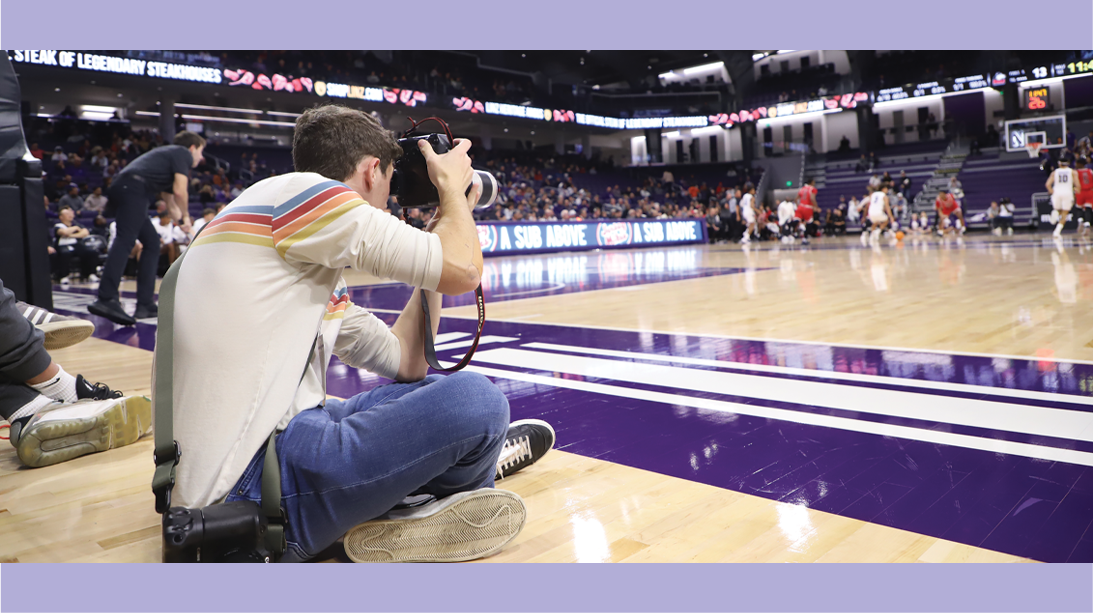
Josh Sukoff taking photos at Welsh-Ryan Arena. (Photo by Eloise Apple)
Sukoff’s broadcast experience only reaffirmed his passion for photography, helping him realize he prefers working one-on-one with his subjects.
“The way that I’m able to impact people through these pictures makes me feel good,” Sukoff says. “Being able to put a smile on someone else’s face puts a smile back on mine.”
Seeger Gray
Medill second-year Seeger Gray’s passion for photography began with a point-and-shoot camera gifted to him by his granddad when he was younger. Gray spent the next few years photographing local Wisconsin lakes and forests, which he found less daunting than photographing people.
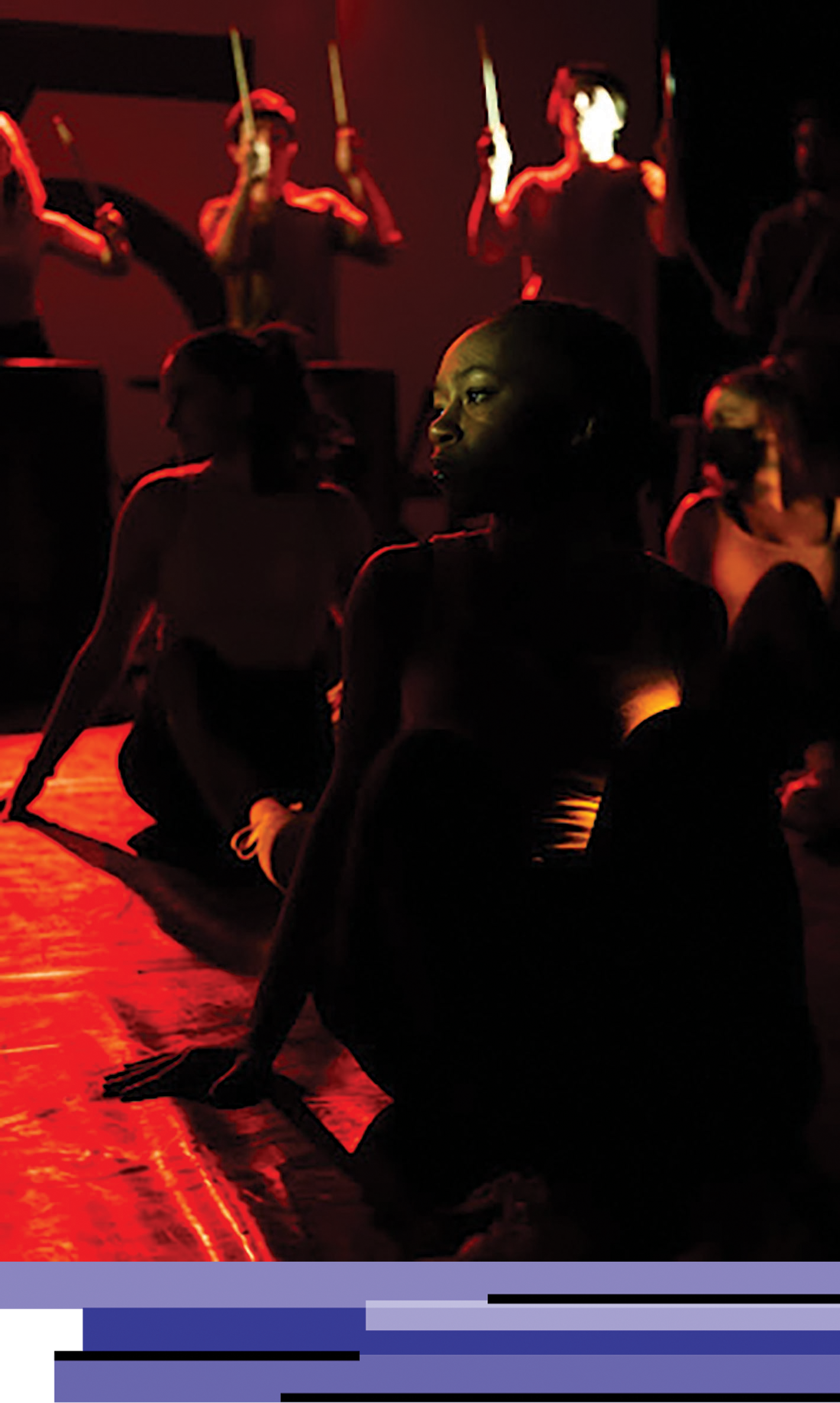
Boomshaka’s 2022 Spring Quarter show. (Photo by Seeger Gray)
“You have some time to mess around with it,” Gray says. “Also, I liked that there was kind of an excuse to get out to these places. Enjoy nature.”
Although he still brings his camera on walks, Gray’s journalism interests as a Northwestern first-year pivoted his craft to photojournalism and portraits. In the summer of 2021, Gray volunteered at his local WORT-FM news station to report and occasionally take photos for his articles, which was his first time merging his interest in journalism with his love for photography.
For a photojournalism class assignment on capturing emotion through photography, Gray took portraits of people working a volleyball game at Welsh-Ryan Arena. Instead of taking photos of the game on-court, he wanted to photograph behind-the-scenes workers that spectators don’t usually notice.
“I want to show people something that only a camera can,” he says.
Along with his interest in portrait photography, Gray is the sports photo editor at The Daily. He advises his fellow photographers to position themselves at optimal angles for their shots. For example, if a basketball player is going up for a three-pointer, he says photographers should stay on the side where the player’s arm will not block their face.
For Gray, an added benefit of joining The Daily was the ability to borrow photography equipment. With used cameras still costing hundreds of dollars, he says photography is an expensive hobby that is difficult to break into without access to equipment.
Gray bought a camera in 2021 to branch out into more paid work, doing freelance photojournalism in Chicago and photographing student performances like Into the Woods.
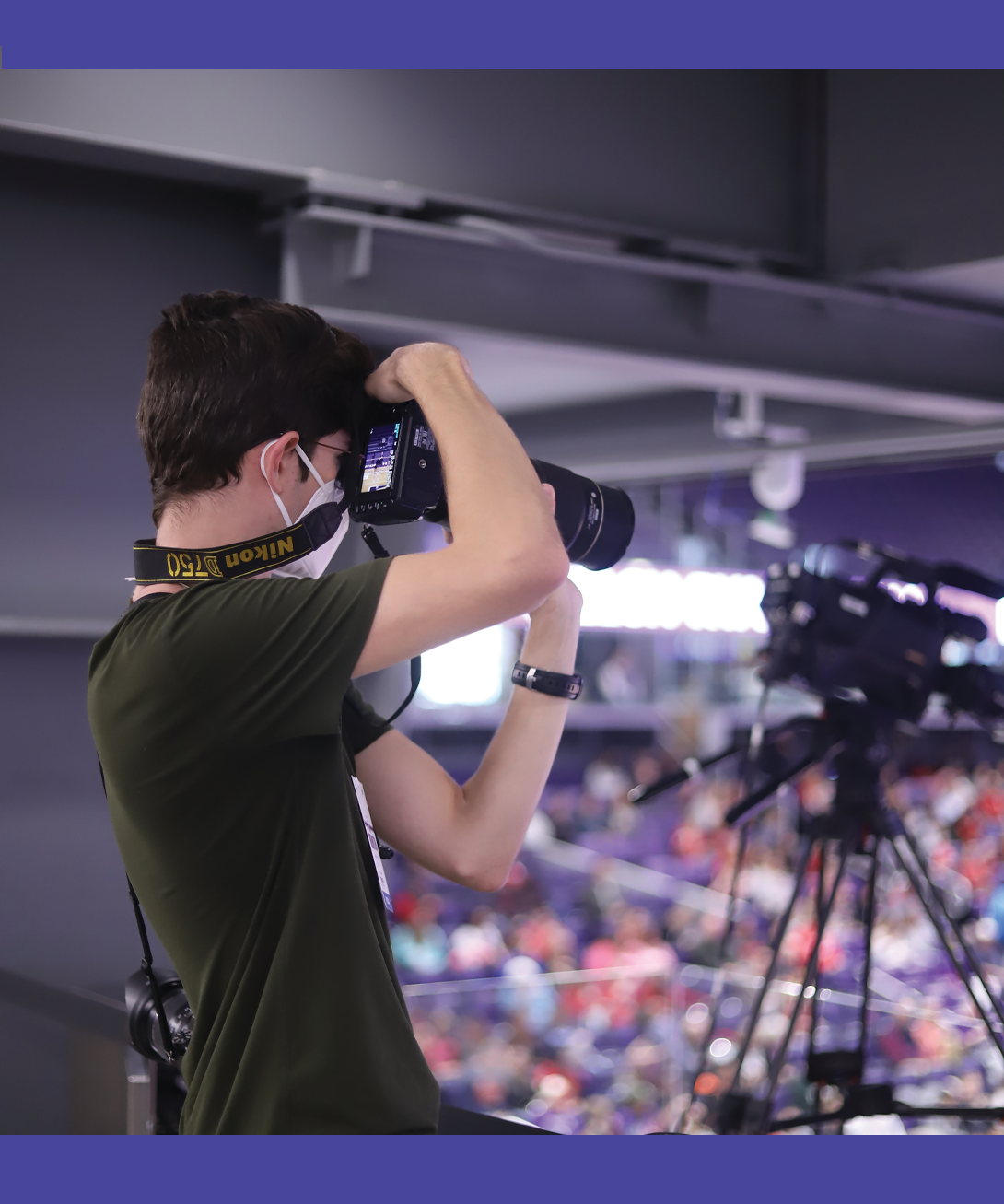
Seeger Gray taking photos in Welsh-Ryan Arena. (Photo by Eloise Apple)
“I really like watching theater and dance shows, but I do have kind of a short attention span. I like being able to simultaneously enjoy the show and be working at the same time,” Gray says.
Positive feedback from his photo subjects makes the experience worthwhile, he says. It’s why he wants to do photography professionally rather than just as a hobby.
“Photojournalism gives me more of a chance to have my work be seen and make an impact,” he says.
Angeli Mittal
It’s a brisk fall morning in Highland Park, and Weinberg third-year Angeli Mittal readies her camera to photograph the Northwestern women’s golf team.
“I’m using an 18-400 millimeter lens, which means that I can get really close up,” Mittal says. “The more close up that you get, the better. It’s called a bokeh effect.”
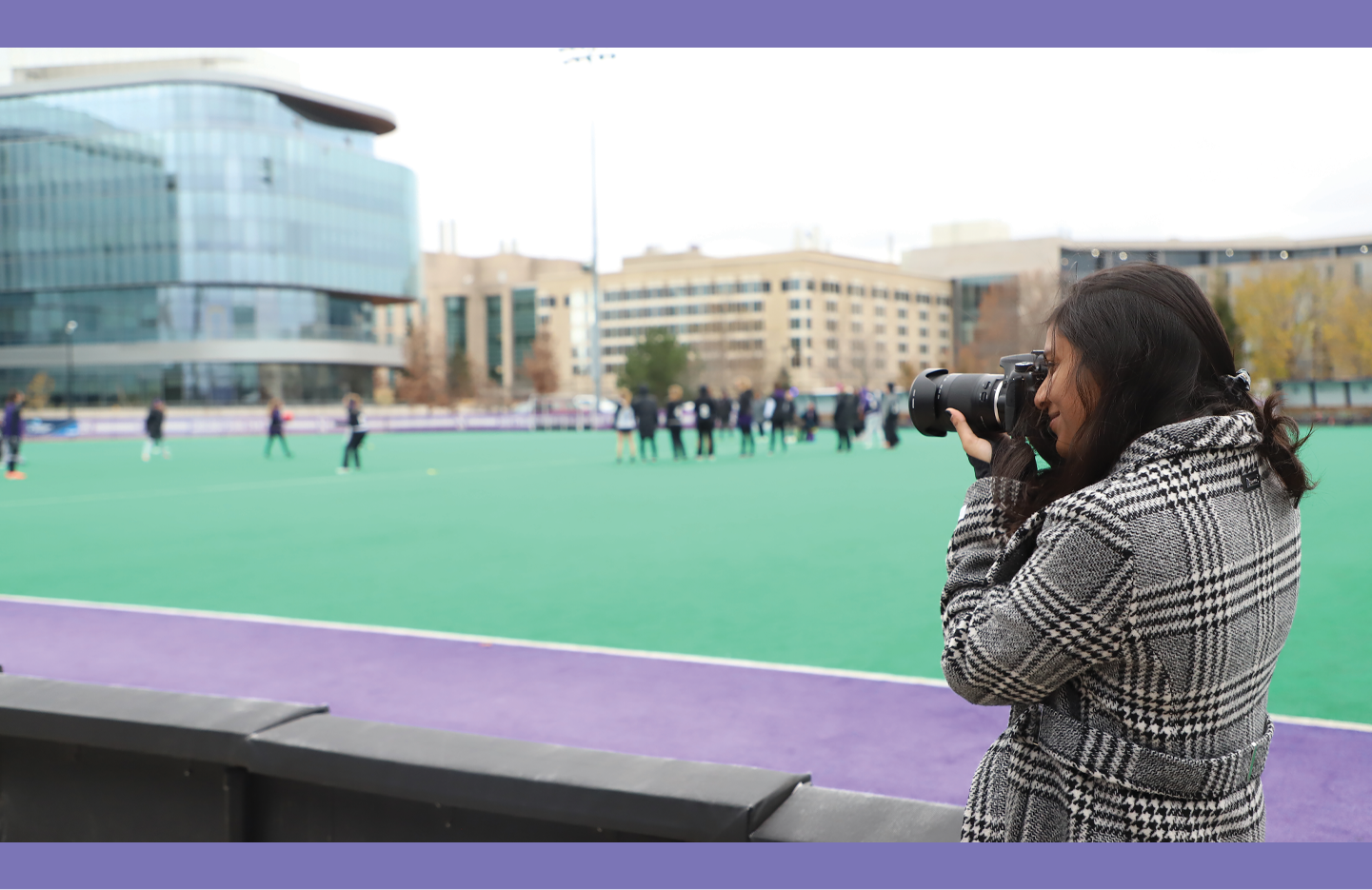
Angeli Mittal taking photos at Lakeside Field. (Photo by Eloise Apple)
Mittal focuses the lens.
She waits for a player to swing, then clicks. The image shows the high-definition golfer framed against a soft, out-of-focus background — indicative of the bokeh effect.
Mittal inherited her uncle’s interest in photography. In fact, the camera she brought to the women’s golf match is his. Since she was 10, Mittal and her uncle have gone stargazing annually to photograph the night sky. After learning the basics of taking photos, she dove into the intricacies of camerawork through trial and error.
Mittal is the digital managing editor for The Daily, where she mainly photographs sports and campus events like the 2022 Northwestern Commencement ceremony. Photography is a form of visual self-expression for Mittal.

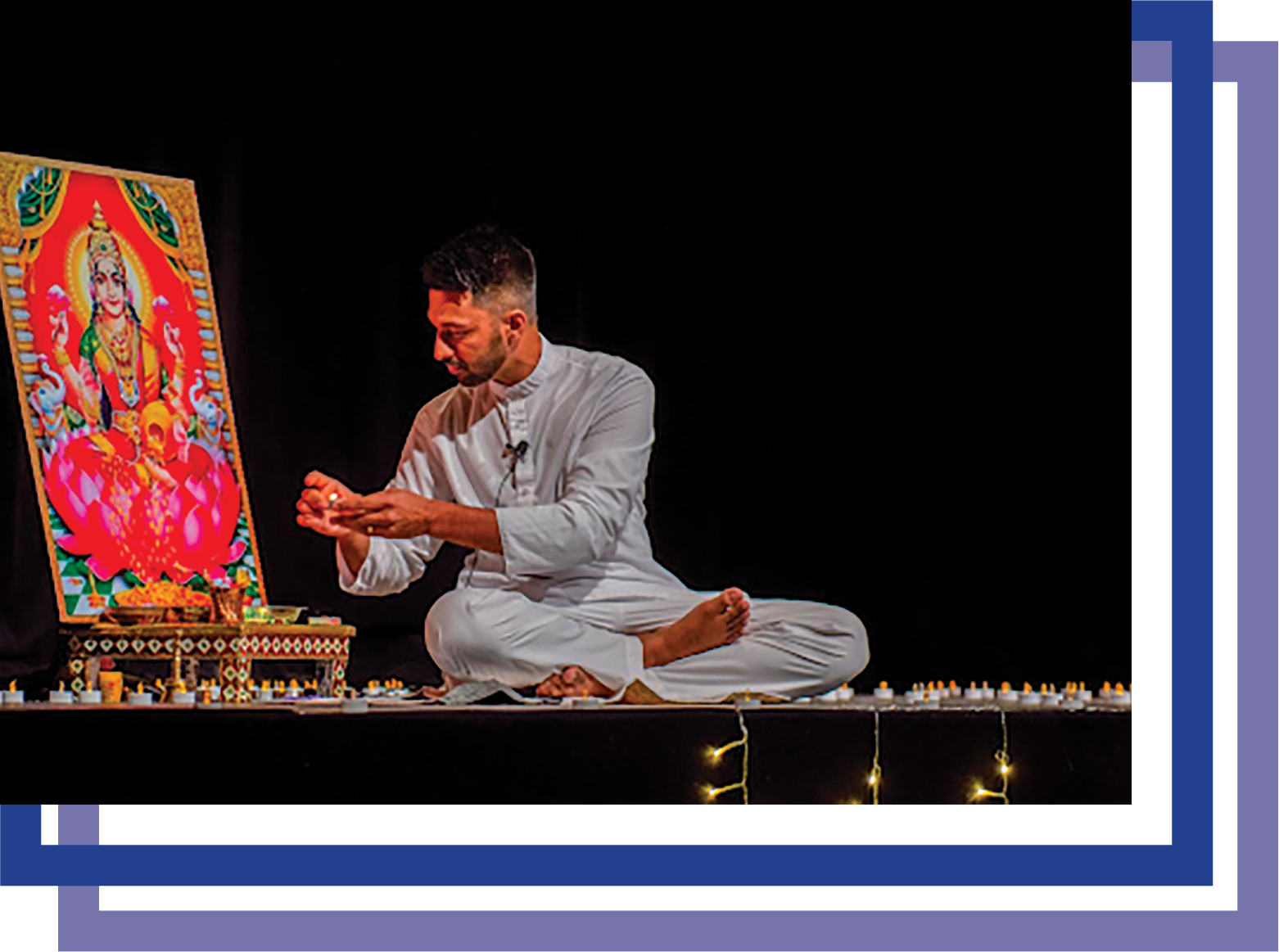
The religious ceremony of Northwestern’s Diwali celebration. (Photo by Angeli Mittal)
“I think that photos are just way more appealing than words,” she says. “I think that’s also just the first thing that people see, so taking a good photo can mean whether or not someone reads an article.”
One of Mittal’s proudest photo sets includes pictures she took of the Northwestern Diwali celebration, sponsored by Religious & Spiritual Life, OM at Northwestern and the South Asian Students Alliance in 2021. She says this project meant a lot because she celebrates Diwali, the Festival of Lights, at home.
At Northwestern’s Diwali event, Mittal set up the festive lights lining the Sheridan sidewalks and adorning Tech. She also photographed the religious ceremony, where lights spread across the stage.
In addition to the striking photos that she took, the Diwali celebration reminded her of time spent with her grandfather, a Hindu priest.
“It was really nice to bring a little bit of home to campus,” Mittal says.